Ten minutes before sunset, the muezzin’s call to prayer goes out over the megaphones. In the summer heat, the bustle of Byblos pauses for a moment, then quickly resumes. Fresh fish is slapped onto steaming grills, beer is poured into iced glasses, and visitors – both Lebanese and foreign – stroll through the cobblestone pathways of what is reputed to be the world’s oldest continually inhabited city.
For perhaps 7,000 years it has been thus, in one form or another. People have lived in this picturesque coastal city in the north of Lebanon probably longer than any other. It is home to ruins from the Phoenicians, Romans, Byzantines, Crusaders and others. It was the launching point for the spread of the modern European alphabet. In the swinging 1960s, it emerged as a leisure destination where Brigitte Bardot frolicked in the marinas along with other icons of the decade. To this day, late-night outdoor bars and restaurants continue to thrive.
Somehow, Byblos’s duality as both age-old and modern doesn’t evoke the identity crisis of other Lebanese cities that clumsily try to reconcile the same impulses. But it isn’t easy. The ancient city must deal with the enormous challenge of protecting its rich heritage while at the same time addressing the problems of any modern metropolis: population growth; air, water, and noise pollution; poor infrastructure; and in this case a high risk not only of earthquakes and storms but the sectarian violence that is never far from the surface in Lebanon.
Faced with these challenges, Byblos has now hired the Middle East’s first “chief resilience officer” – a new post made possible after the city was selected for the Rockefeller Foundation’s 100 Resilient Cities network, a programme to help urban areas cope better with both natural and manmade threats.
“This notion of resilience is new to us,” says Tony Sfeir, who for years worked in hospitality in the US and elsewhere, before returning to his native city to take up the new post. “It was more about sustainability, long-term planning, the environment. But resilience is something new – we understand that it’s everything together, to be flexible, immune and strong.”
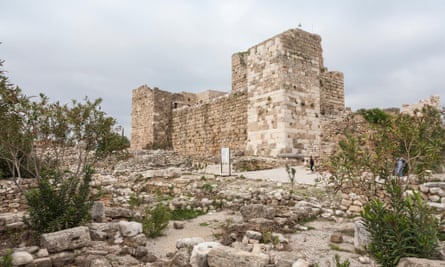
For Byblos, the struggle is how to preserve its identity as an “old city”, while expanding beyond historical tourism. To address this challenge, Sfeir is putting together an advisory board from the private sector, academia, organised labour, religious institutions and civil society. The first order of business is the preservation and enhancement of the city’s historical identity.
The oldest part of Byblos lies away from the busy heart of the city, along a coastline cliff: here, visitors climb a 1,000-year-old Crusader citadel for a panoramic view of the Mediterranean, scramble up the steps of a Roman amphitheatre and peer over a metal railing into the 2,000-year-old necropolis of Ahiram, the city’s Phoenician king.
But with the constant risk of earthquakes, storm surges and coastal erosion against these millennia-old stone walls, this heritage is continually threatened. The resilience committee aims to protect the area, particularly the ruins, from the harsh effects of the sea. Using the latest 3D mapping techniques, the municipality will scan the shapes, positioning and exact locations of all of its ruins – both coastal and inland – to be able to rebuild them exactly as they were in case they suffer irreparable damage in an earthquake or freak storm. Out at sea, Sfeir is looking into plans to install a staggered, underwater breakwater to soften the impact of wave action on the fragile coast.
But resilience goes beyond the preservation of ruins. In Byblos, it means transforming them into a more accessible public space. The Crusader citadel and surrounding ruins are separated from the rest of the city by a fence, while a rocky pathway along the shore, where Phoenician symbols are carved into the cliff face, is only accessible if you climb up from Byblos’s old port.
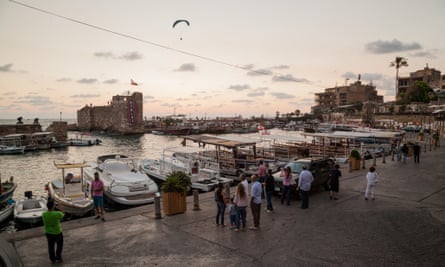
“I remember my parents telling me that they used to date here. Sixty, 70 years ago, it wasn’t closed off like this,” says Sfeir, who is committed to turning the isolated citadel grounds into a meeting place by building a footpath from the port to the clifftop, where it will join a cycle path. He would also like to see the Roman amphitheatre used as a venue for small concerts and gatherings. A traditionally built red-roofed house, thought to be about 100 years old, is the only “modern” building in the archaelogical zone of the city, and Sfeir would like to see this turned into a museum celebrating the city’s role as the apocryphal birthplace of the western alphabet. “Imagine if this area becomes accessible. This would no longer be a prison, but part of the city,” he says excitedly.
In more lived-in parts of the city, the souk market area and main square are almost entirely covered with buildings, old and new, that line ancient stone roads used since the time of the Romans. Here, too, the municipality is seeking to restore and preserve the city’s old identity: so far, it been able to replace the modern concrete facades of buildings with limestone to restore the ancient aesthetic, and has removed the spider’s web of power cables that drape across the streets of all Lebanese cities by centralising generator stations. There are plans for more pedestrian areas and public transport to reduce car traffic.
The committee also has an eye on the city’s future. As the population expands east towards Lebanon’s mountain ranges, there is a threat to the area’s vegetation and geological integrity. Although the committee recognise that it can be difficult to restrict development, its plans for this “new Byblos” are centred on avoiding the traffic congestion (narrow streets, lots of traffic, no public parking) of the old city, while also making sure there are preserved green areas and parks, and protecting the area’s trees.
To make the city more resilient in the longer term, the committee also wants to expand the city’s role beyond tourism, by drawing in investors, banks and universities to make Byblos a commercial and educational hub. “We want to diversify our economy, and not put all our eggs in one basket,” says Sfeir. “If something happened to tourism, we don’t want our city to be out of business.” Next year, a forum is to be held in the city to look towards 2025, attended by engineers, urban planners and investors, to map out a strategy to diversify its economic base.
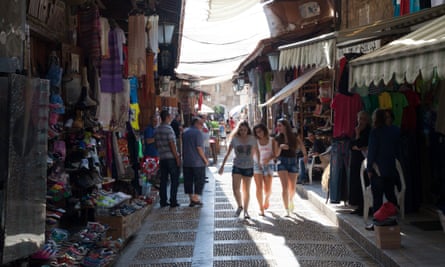
The committee has also contacted other cities facing similar issues, such as San Francisco for advice on earthquake planning, and Rome to explore options to preserve cultural and archeological treasures.
Then there are Lebanon’s manmade threats. The 1975-90 civil war led to the deaths of more than 100,000 people but also the destruction of much of its infrastructure. Intensive efforts to rebuild have slowed in recent years, and the civil war in neighbouring Syria has now brought a new threat to the country, hitting Lebanon’s vital tourism sector hard. But Byblos, which is predominantly Maronite Catholic, was fortunate enough to remain relatively peaceful during the civil war, and has continued to ride out instability. “Byblos escaped more than a tornado, more than a hurricane, and more than a tidal wave – we escaped a civil war,” says Alexi Karim, owner of the charming Byblos sur Mer hotel and one of the private sector stakeholders on the resiliency committee. Most of the battles of the war were concentrated in the larger cities that have more diverse sectarian communities, such as the capital Beirut. Many vital archaeological ruins in Beirut were destroyed during the civil war, and crusader castles in Nabatieh in the south and Tripoli in the north were used as fortifications by milita groups. But in Byblos they remained largely unscathed.
Thousands of Lebanese from these war-torn areas moved to Byblos during the 15-year conflict, leading to a period of unregulated construction that Sfeir now wants to move beyond. The relative stability of Byblos during the war years even brought it a degree of exonomic prosperity. “When the war was burning the whole country, we were not involved. That’s resilience by itself,” Karim says.
With his hotel and seafront restaurant, Karim welcomes plans for the breakwater to protect his seafront establishments from the storm damage they’ve suffered in the past. However, the plans will count for little 1if Lebanon’s political and security problems aren’t resolved. “The political situation is a storm that hits us every day, every summer,” he says.
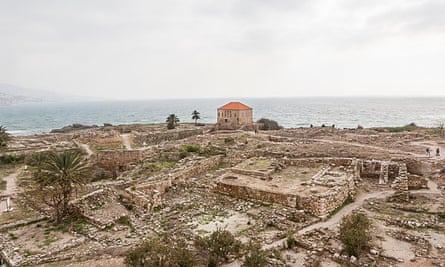
The paralysis of Lebanon’s central government in recent years, torn between the rival interests of powerful political figures and regional countries, has undermined funding for local municipalities and is indeed one of the factors that has pushed Byblos to seek outside funding from programmes like 100 Resilient Cities. According to Sfeir, Byblos’s budget – allocated by the central government – barely covers rubbish collection and police wages. Other large cities, such as Tripoli in the north and Sidon in the south, have also sought grants from international bodies, such as the European Union.
This is what resilience looks like for a city like Byblos: preserving ancient identity and looking to the future, all while coping with political and geological fault lines. Still, Byblos’s thirtysomething mayor, Ziad Hawat, is confident. “Byblos is an amazing city,” he says. “You don’t know what might happen tomorrow – but we are thinking positively and looking long-term.” Another 7,000 years may yet be possible.
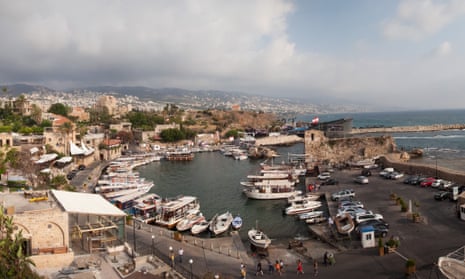
Comments (…)
Sign in or create your Guardian account to join the discussion